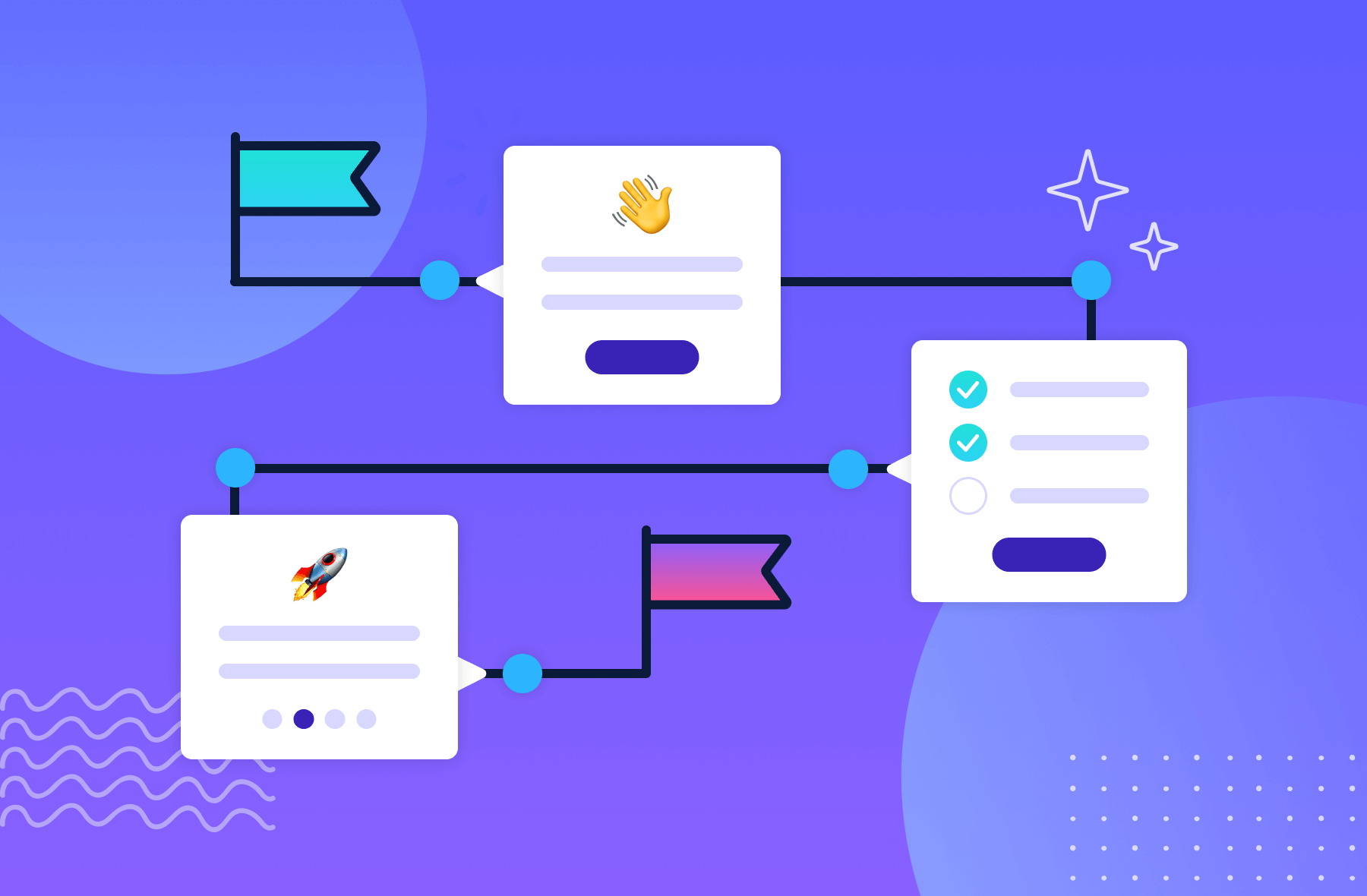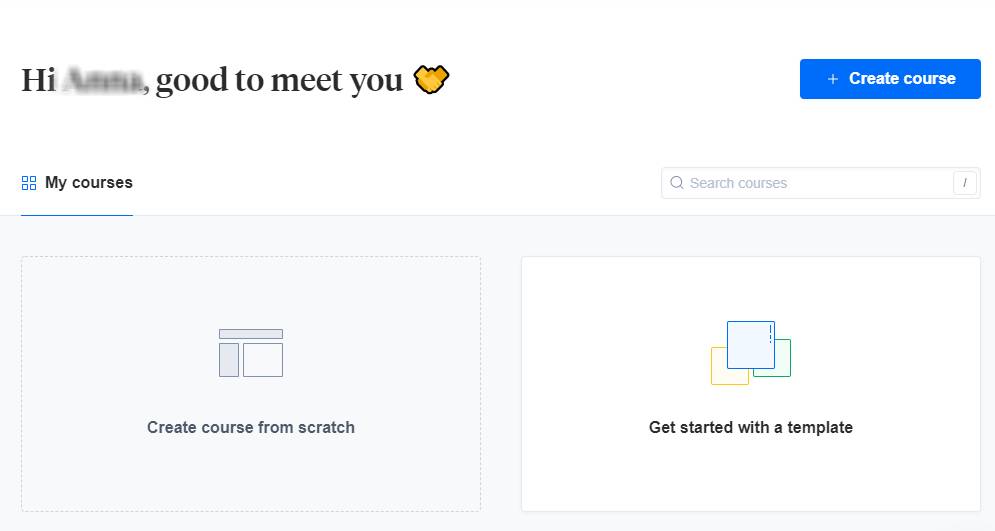5 EdTech platforms that nailed onboarding—and how you can too

.png)

.png)
In education technology, poor onboarding doesn’t just create frustration—it slows down learning. Whether your platform is for teachers, students, or administrators, you need to get users to value fast. Skip the bloated walkthroughs and one-size-fits-all tutorials. Focus on goal-based guidance, role-specific flows, and visual, interactive onboarding that mirrors the real classroom experience.
When it comes to EdTech, even the best-designed platforms will struggle if users don’t understand how to get started. Teachers are under pressure to deliver engaging lessons. Students want fast access to their assignments. Admins need to ensure security, reporting, and compliance. None of them have time for a lengthy, generic setup process.
If onboarding doesn’t show value immediately—if it’s too long, too technical, or too vague—users will abandon your product before they ever see what it can do.
Despite good intentions, many EdTech platforms still treat onboarding as an afterthought. Common problems include:
Too much content, too little context
Instead of walking users through real tasks, many EdTech tools dump users into a dashboard full of features with little explanation. Without relevance or sequencing, users get overwhelmed and miss key functionality.
One-size-fits-all experience
Students, teachers, and administrators have very different needs. But many platforms force everyone through the same onboarding flow—confusing for students, unhelpful for teachers, and irrelevant for admins.
Assumes too much tech fluency
Even if users are digital natives, that doesn’t mean they’re familiar with your platform’s structure. When onboarding assumes people already know what to click or why, users stall or skip steps.
No clear moment of success
If onboarding doesn’t lead to a visible, satisfying result—like assigning a task, submitting homework, or seeing a progress chart—users won’t get that motivating “aha” moment that drives adoption.
Your onboarding should feel like a helpful guide, not a lecture. Each role has different goals, and your onboarding must reflect that.
Teachers need task-focused guidance
Educators are busy. They don’t have time to explore. Your onboarding should show how to:
Focus on showing how your platform makes teaching easier—not just what it can do.
Students need simplicity and access
Students need clear, immediate access to:
Keep the experience visual, mobile-friendly, and low on distractions. The faster they can complete their first task, the more likely they’ll return.
Admins need control and oversight
For school or district IT teams, onboarding needs to:
Include clear documentation, but also guide them in-app during setup with progress indicators and context-aware tips.
You don’t need a massive redesign—just a shift in how you think about the user journey.
Start with an academic milestone
Don’t start with profile setup or a product tour. Anchor onboarding in a real goal:
Give users a win early and show them what success looks like.
Use visual tours and progress bars
Clarity beats complexity. Guide users with:
This makes onboarding feel like forward motion, not a wall of information.
Segment by education level and role
Use a simple prompt upfront:
Then customize the flow accordingly, skipping irrelevant steps and showing features that actually matter to that user.
Offer mobile-ready, accessible content
Many EdTech users access tools from phones or tablets. And your audience might include students with different accessibility needs. Use:
This reduces friction and supports more inclusive learning.
Gamify early actions (when appropriate)
For younger learners especially, consider light gamification:
It adds motivation—and makes onboarding feel like part of the learning experience.
Eduflow supports teachers with in-app guided onboarding, helping them build their first course step-by-step—from creating modules to setting up peer review workflows. It also prompts recommendations for additional features based on progress (e.g. peer feedback, branching content) to encourage deeper exploration.
Takeaway: Real‑time instructor guidance with proactive feature suggestions helps educators get up and running fast.

360Learning layers onboarding through interactive, social-first training designed to accelerate platform adoption at scale. New users engage in cohort-based onboarding, peer‑to‑peer feedback, and task-based learning labs. Their structured playbook emphasizes collaborative learning and role-specific paths for instructors and learners alike.
Takeaway: Learning through collaboration—rather than lecture-style hand-holding—makes onboarding more effective and scalable.
Degreed introduces users to its learning platform with a welcome modal, followed by an optional guided tour of features like learning pathways, skill badges, and dashboards. The modal is skippable so experienced users can jump right in, while others are supported through contextual popups that highlight key UI elements and value areas.
Takeaway: Offering a guided yet skippable tour balances control and clarity—welcoming users on their terms.
Synthesia frames onboarding around user goals—like creating a video tutorial or education module—and adjusts the flow accordingly. As users select their use case, the system tailors prompts to show only relevant features and even provides sample scripts or template options. This mission-focused setup helps users connect quickly to platform value.
Takeaway: Goal-driven onboarding that adapts to learner needs makes setup purposeful and motivating.
SafetyCulture’s integrated EdApp onboarding platform delivers bite-sized video lessons and interactive training directly in-app. New users—especially frontline teams or educator-trainers—start with short, role-based modules that teach compliance checks, content audits, or procedural workflows using the app itself.
Takeaway: Mobile-first, micro-course onboarding empowers users to learn by doing, anywhere and at any pace.
When onboarding meets people where they are—whether it’s a busy teacher before first period, a student logging in on a phone, or an admin deploying across a district—you see results that matter:
Better onboarding isn’t just better UX—it’s a better educational experience.
If your EdTech tool isn’t easy to learn, it won’t be easy to use—and it certainly won’t scale. Great onboarding gives every user confidence and momentum. It doesn’t just explain features. It shows users what’s possible and helps them achieve it.
In a world where classroom time is precious, your onboarding should feel like a head start—not a hurdle.